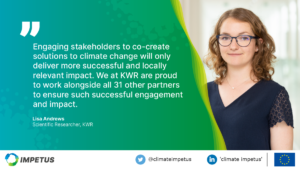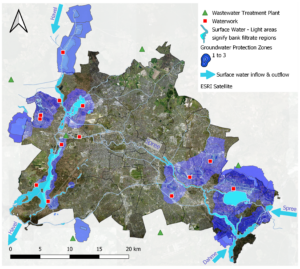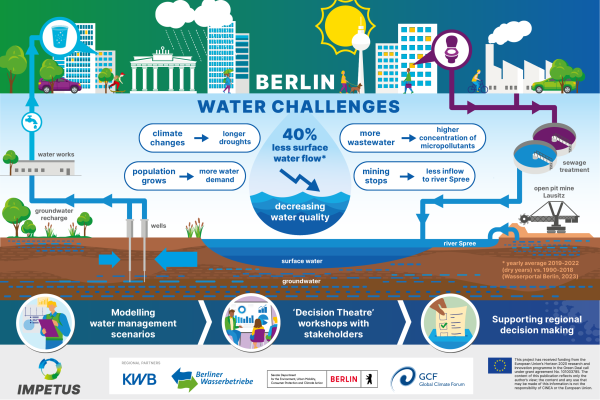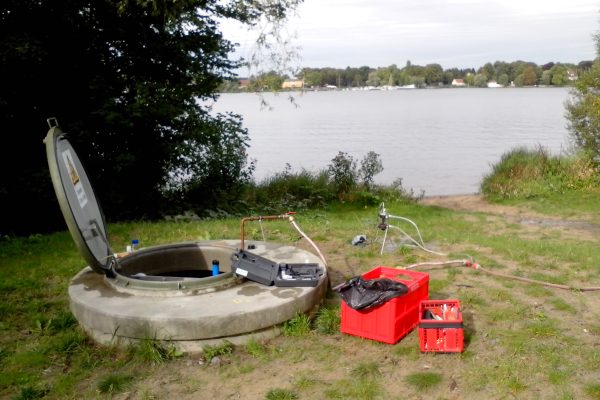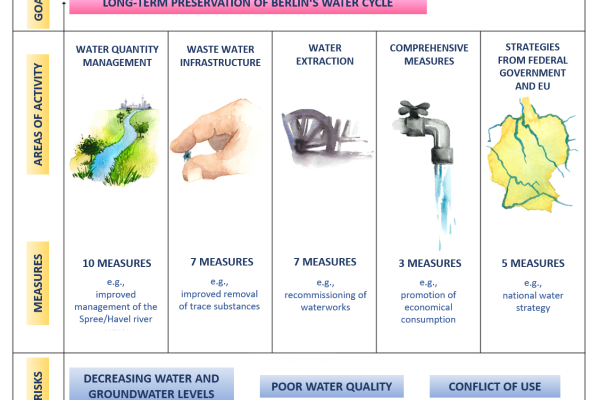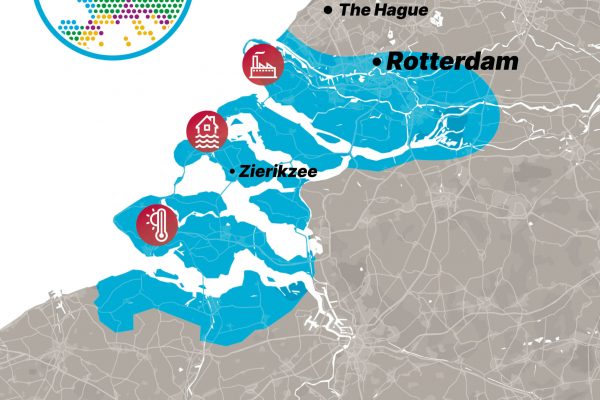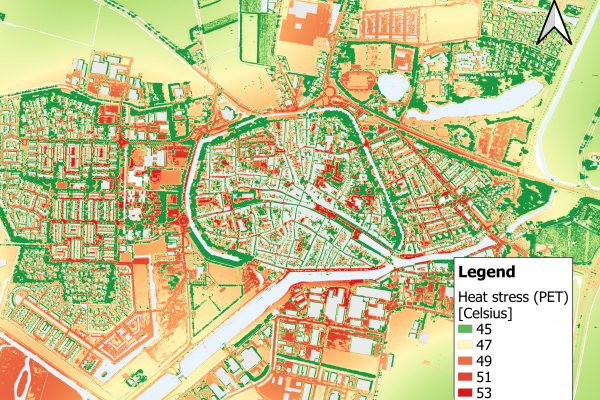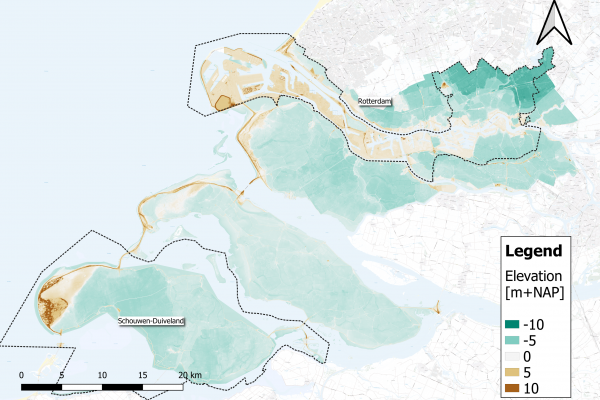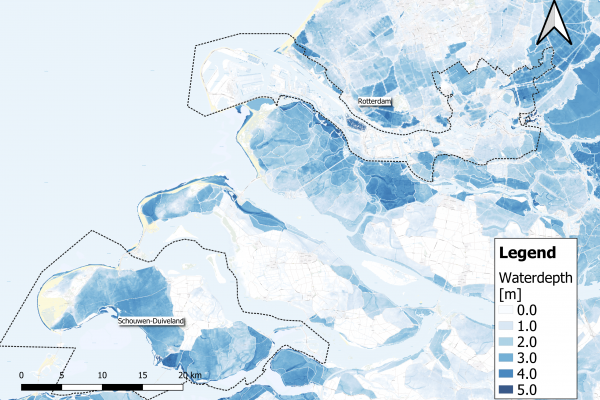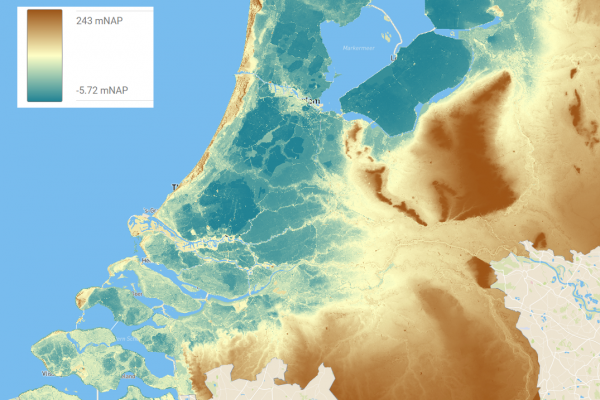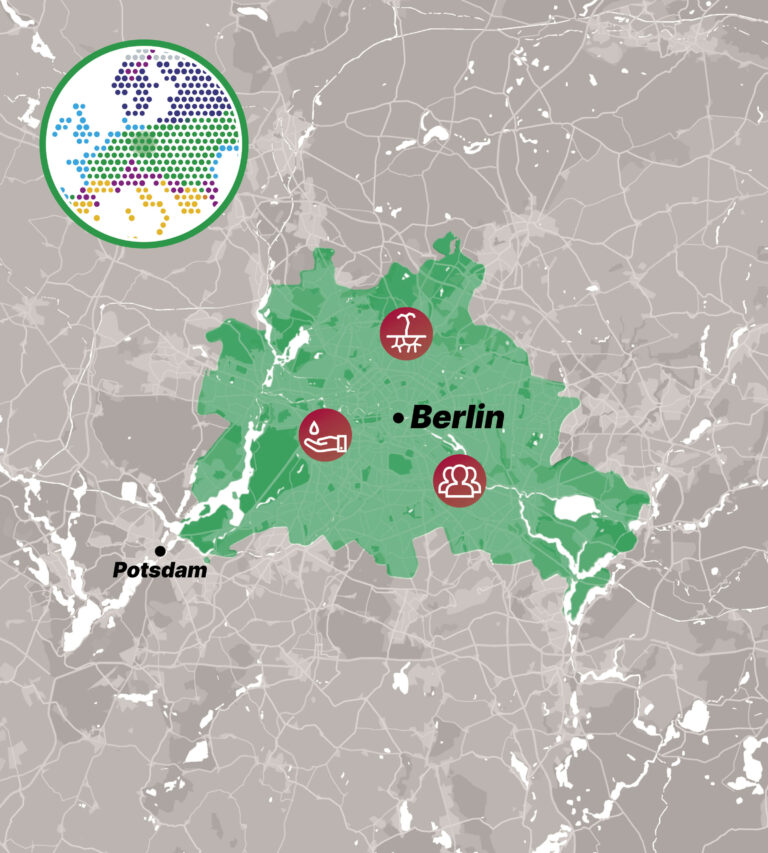
Prognosis
Berlin faces increasing drinking water challenges due to rising demand from population growth and more frequent droughts. An expected 40% reduction in summertime natural surface water runoff by 2040 further complicates water management, necessitating strategies to ensure sustainable water supply and mitigate the impacts of climate change.
Situation
The metropolitan Berlin-Brandenburg region in the north-eastern German lowlands has a relatively high surface area of rivers and lakes, but natural flow is low and increasing temperatures has led to higher evaporation rates and drought periods resulting in reduced river flows. The city of Berlin and its metropolitan region rely on groundwater as the drinking water production source. Treated wastewater is currently released back into the local freshwaters, resulting in a partially closed water management cycle within the city area. Brandenburg state has a higher reliance on water for agriculture and ecosystems. The rising pressure of climate change is impacting the natural water cycle.
Climate related issues

Water stress
Climate change is expected to cause more frequent drought periods, leading to decreased water availability.
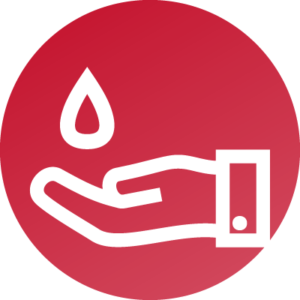
Securing drinking water
Urban consumption of drinking water, industrial and agricultural needs, recreational use, and ecological requirements will compete for limited water resources, creating potential points of contention.

New policies required
The Masterplan Water outlines various measures and strategies to ensure a stable and sustainable water supply.
Key actions
We are supporting decision-making processes by calculating scenarios for water resource challenges and mitigation measures and their effects on surface water, groundwater, and drinking water by:
- Applying simplified models to evaluate pollution inputs to surface waters used for drinking water production and scenarios of related measures.
- Identifying the relationship between the ratio of bank filtration and groundwater abstraction rate from drinking water wells with detailed groundwater models.
- Developing and conducting so-called ‘decision theatres’ with relevant stakeholders to support decisions on measures to address challenges of reduced water availability.
Contact us

Nasrin Haacke
Kompetenzzentrum Wasser Berlin
nasrin.haacke[@]kompetenz-wasser.de
Events
News
Resources
Relevant sectors:
Municipality
Authorities
Citizens
Water utilities
Industry
Nature conservation associations
Our ambitions
“In the IMPETUS project’s continental demo site, our primary goal is to tackle water scarcity in a city with a semi-closed water cycle. By identifying gaps in the regional water cycle and developing future usage scenarios, we aim to model both surface and groundwater in detail.
Our efforts to simulate water balance scenarios are crucial in reducing uncertainties, supporting strategies, and conducting vulnerability assessments. Moreover, this project supports the creation of a comprehensive regional strategy for water management and climate adaptation, developed by local authorities, to position the region as a national model for effective water strategies and best practices.”
Nasrin Haacke, Kompetenzzentrum Wasser Berlin
The following ambitions have been set:
- Simulate and map the regional water cycle and water balance (quantitative and qualitative).
- Assess cross-sectoral, regional vulnerability of critical conditions in the local water cycle.
- Define and assess scenarios for the development of water resources under future challenges and potential mitigation measures.
- Assess the effect of reduced groundwater recharge rates with detailed groundwater models.
- Preparation and realization of several Decision Theatres as novel approach for stakeholder engagement that supports decision making, incorporating results of modelled scenarios.
- Discuss and agree on measures to be included in Decision Theatres with most relevant stakeholders.
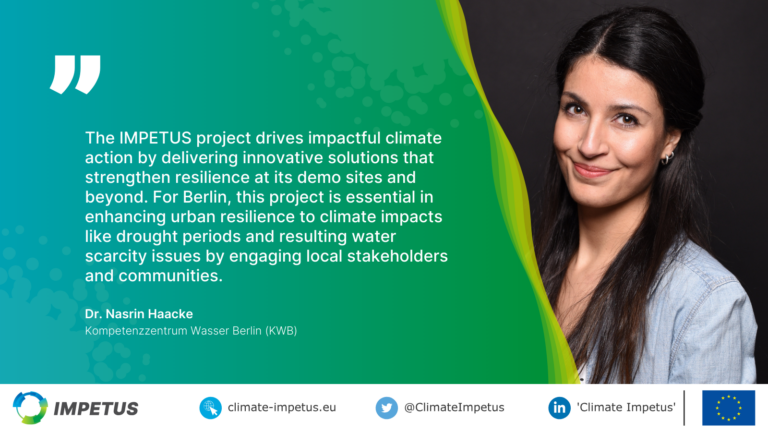
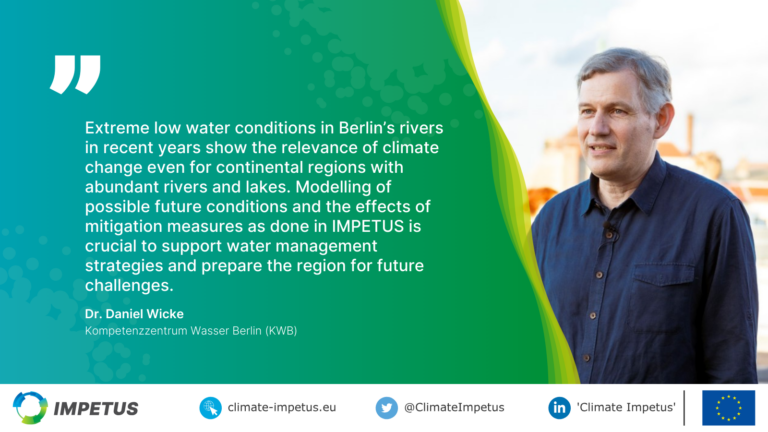
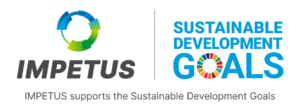
Issues
- Drought periods in recent years resulted in low river flows during summer being half of average values.
- Upcoming closure of coal mine south of Berlin and resulting reduction of groundwater discharges to the Spree river further reduces flow to one of Berlin’s major rivers considerably.
- Berlin’s semi-closed water cycle causes continued challenges for the production of drinking water via bank filtration and securing drinking water quality.
- Longer drought periods in the summer reduce surface water flows substantially resulting in higher shares of treated wastewater in river stretches used for drinking water production via bank filtration.
- For adequate management of different interests.
- To harmonise the approach across the federal states of Berlin and Brandenburg.
- To converge single-aspect policies into an integrated, common strategy.
Region-specific solutions
Integrated mapping and regional watershed modelling




The evaluation of future scenarios such as low flow periods in surface waters, reduced natural groundwater recharge or different discharge routes for treated wastewater, and their effects on water resources is crucial for authorities and water utilities in order to secure drinking water production and a sustainable management of urban water resources.
For this, different modelling approaches are applied in IMPETUS to assess regional water flows, critical shares of treated wastewater and surface water groundwater interactions relevant for drinking water resources. These efforts support decision making including prioritization of measures for the local water management plan “Masterplan Water”.
Our approach:
- Development and application of simplified models to assess water quality and quantity changes in the semi-closed water cycle of Berlin.
- Calculation of scenarios for reduced surface water flows and its effects on water ballances and shares of treated wastewater and stormwater runoff.
- Detailed groundwater and surface water modelling for specific relevant issues in the water cycle (e.g. variability of bankfiltration shares and reverse flows in surface water stretches).
- Visualization of detailed modelling results in easy understandable map views.
Decision Theatres




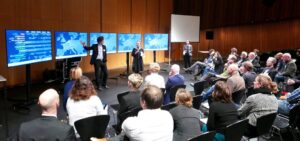 The approach of Decision Theatre (DTh) is an IT-supported discussion with interactive visualization environments enabling results-driven discussions with relevant stakeholders.
The approach of Decision Theatre (DTh) is an IT-supported discussion with interactive visualization environments enabling results-driven discussions with relevant stakeholders.
Several Decision Theatres will be applied in the Continental demo site in order to exemplarily discuss possible futures of regions threatened by water scarcity and parallel demographic and economic growth (e.g. new industries).
Our approach:
- Definition of water-related conflicts, threats, and scenarios for the demo site.
- Analysis of measures envisaged by the Berlin authorities (senate) and possible consequences.
- Discuss and decide on policy options/adaptation and mitigation measures to be discussed during DThs with stakeholders and experts.
- Decide on relevant stakeholders to the region (e.g., public authorities, municipalities, farmers, people from the industry, water supply, and households) for DThs.
- Use an agent-based model for simulating actions and interactions of autonomous agents (stakeholders).
- Conduct several DThs with selected stakeholders.


